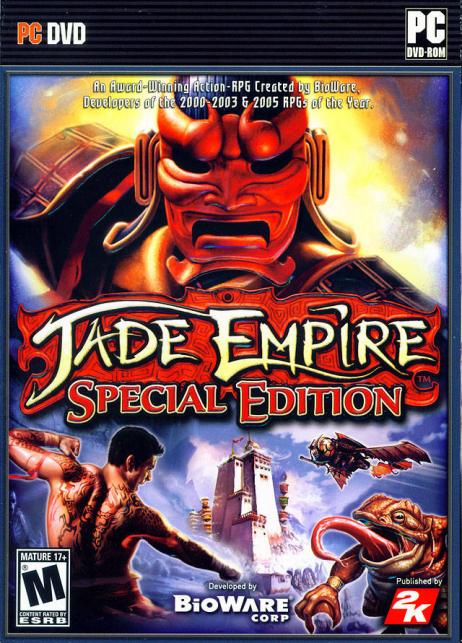Jade Empire: Special Edition Review
-
Category: ReviewsHits: 12481

Article Index
Page 2 of 3
Another thing that defines characters is the use of (styles.) There are many types of styles in the game, including magic styles that allow you to cast spells, martial styles that allow you to fight using unarmed combat, and weapon styles that allow you to use weapons. You can only use one style at a time, but you're allowed to hotkey the styles so that you can quickly switch between them. Some enemies are immune to certain styles -- spirits can't be damaged by weapon styles, for example -- and so, as with the ability scores, you have to be careful about how you spend the style points you receive each time you gain a level. If you only put the points into one style, then you'll be really good with that style, but you'll be in trouble if you face an enemy that you can't damage with it. Finally, you'll also run into a slight amount of equipment. You won't be picking up a variety of rings and boots and helmets, and you won't be wearing body armor at all. Instead, you'll only be able to use gems and (techniques.) Near the start of the game you'll find a special dragon amulet that you'll be able to put gems inside of. Gems can increase ability scores, change how often enemies drop power-ups, and provide other sorts of bonuses, and the nice thing about them is that you can move them into and out of the amulet at any time. The (techniques) are permanent bonuses, but once you've picked one up, you won't be able to get rid of it. Most techniques are positive things, but every so often you'll get stuck with a real stinker, too.
The Engine
Jade Empire uses an engine fairly similar to the ones employed by the Knights of the Old Republic games. Just like in those other games, you control a single character, and while you'll have a companion with you for most of the game, you won't be able to give the companion any orders, except to set whether it helps you attack enemies or simply acts in a supporting role. As an example, Dawn Star, the first companion who joins you, can fight with a long sword (attack), or she can help regenerate your chi during battles (support).
Strangely, the camera in the game is fixed directly behind your character, and it always points horizontally. You can move the camera up and down a little, but you can't zoom the view in or out, and you can't rotate or otherwise change the viewing angle. This is sort of an awkward system (if nothing else, it means that your character is always partially blocking your view), but it's strange because this wasn't the system used in the Xbox version of the game. From my understanding, in the Xbox version you could move the camera around, so I have no idea why they'd make it more restrictive in the PC version.
Otherwise, the controls are about what you'd expect. You move your character with the WASD keys, and you steer with the mouse. When combat starts up, you use the left mouse button to make a normal attack (which depends on the style that you're using), you use the spacebar or middle mouse button to block (which protects against normal attacks), and you use the right mouse button to initiate a power attack (which bypasses blocking). This is a fairly common scheme, and it works about as well as ever. There are also various modes that you can enter (such as chi and focus mode), and you can evade (that is, dive out of the way) by double tapping one of the direction keys.
When I played through the campaign using the default (master) difficulty, I found the combat to be pretty easy. Using my standard (swing wildly until everything is dead) strategy, I got through most of the battles without any problems, and I rarely had to change modes or change styles or even block. However, when I moved up to the (grand master) difficulty, things got much tougher. I had to use more strategy and pay more attention, but even so each battle turned into an iffy proposition, and I had to do so much loading that the campaign slowed to a crawl. I'm usually good but not great with action games, so my guess is that regardless of your ability, you'll find a difficulty setting that will give you an enjoyable experience.
Gameplay
As I mentioned way back in the introduction, Jade Empire is a game that relies on and devotes a lot of time to its story. This can be good news or bad news depending on what you're looking for in a role-playing game. For example, there are a few points in the game where you have to listen to a couple hours' worth of dialogue, with little or no combat in between to break it up. The dialogue is well acted, so it's not a chore to listen to it, but there's just a lot of it, and even I (with my preference for an involving story) got a little antsy.
I think it's safe to say that the dialogue could have been edited down to a more manageable level. Many characters need their dialogue to set up their background story or to connect you to what's going on in the campaign, but there are also a lot of secondary characters who get full dialogue trees, and there just isn't any reason why you should need to ask them about their thoughts on the emperor and the empire (among other things), only to get basically the same response each time.


